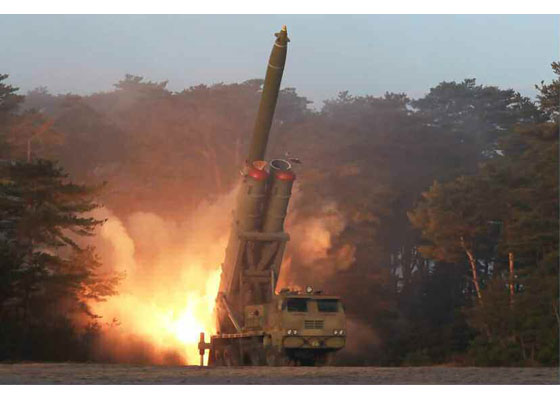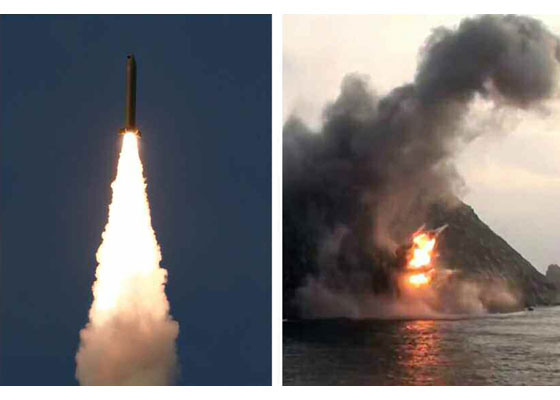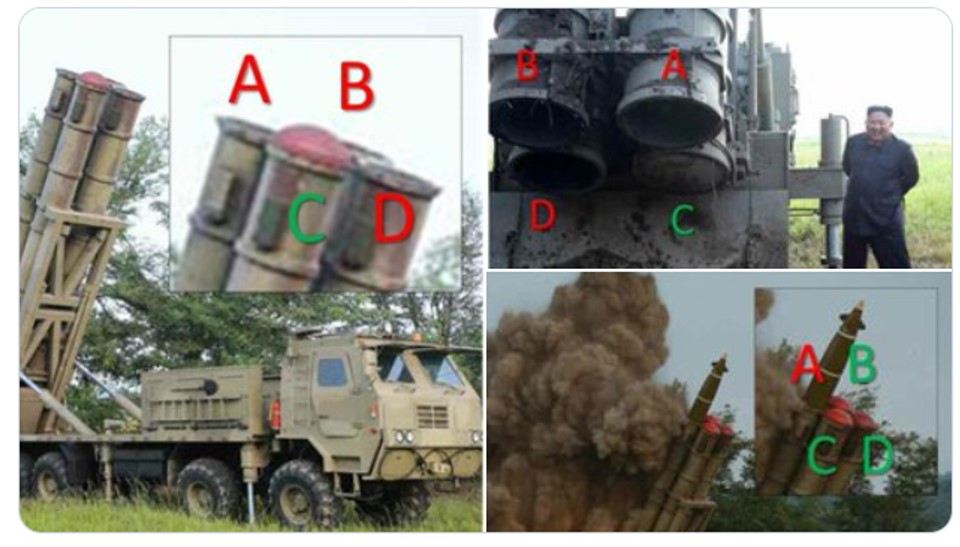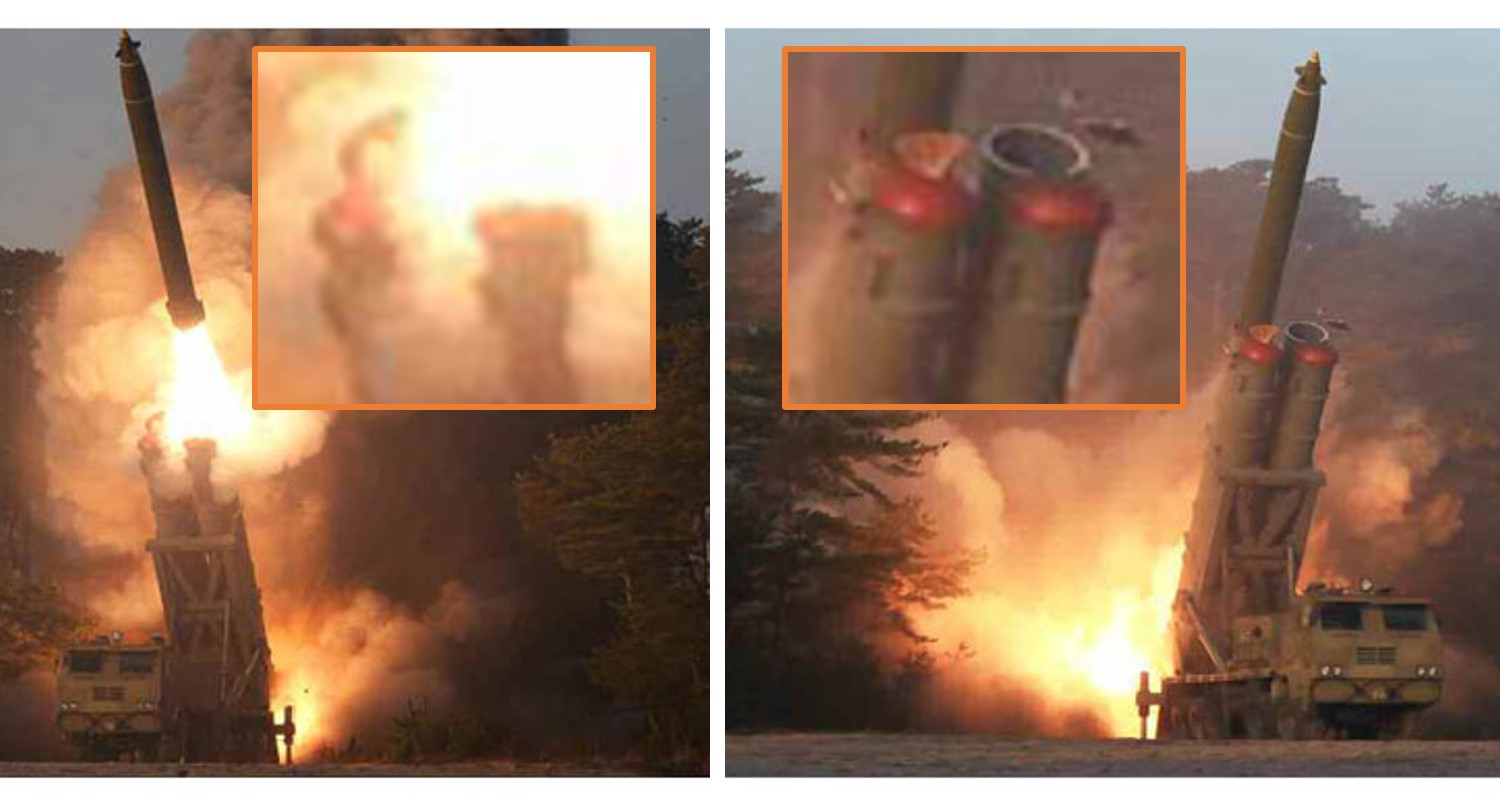Assessment of the March 9 KN-25 Test Launch
On March 9, at 7:36 AM local time, North Korea reportedly fired at least three projectiles covering around 200 km and reaching a peak altitude of 50 km before landing in the Sea of Japan (East Sea). Subsequently released imagery confirmed that a test had been conducted of a weapon previously referred to by North Korean state media as a “super-large caliber” MRLS (Multiple Rocket Launch System), known externally as the KN-25 (an unconfirmed US designation).
This marks at least the sixth round of testing of the KN-25, with multiple projectiles launched on each occasion, bringing it closer to deployable status. (Two additional tests may have been conducted on July 31 and August 2, 2019, but the different terminology and the tracked, as opposed to wheeled, launch vehicles that were used raise the possibility of a different projectile.)

Location
This latest test comes just one week after North Korea fired two projectiles from a KN-25 near Wonsan. Monday’s test occurred slightly farther up the eastern coast, in the Sondok area in South Hamgyong Province. While the precise launch location(s) has yet to be geolocated, the images published by North Korean state media appear consistent with the beachline area just east of the Sondok Air Base. The runway at this air base was used for an earlier KN-25 test—perhaps the first of this system—on August 24, 2019.

In one of the images published, it shows a missile impacting land amid a rising plume of smoke, suggesting a recent prior impact(s) had also occurred. While it is unclear from the images the location of this island, there is a small rocky island around 200 km from the Sondok area, consistent with the flight trajectory, that has been used for target practice for a number of new ballistic missile systems over the past year, including the KN-25 test on September 10, 2019.
North Korea’s Large Caliber MRLS Tests 2019-2020[1]
|
Date
|
Range
|
Apogee
|
Launch Interval
|
| March 9, 2020 |
200 km
|
50 km
|
20 sec & 1 min
|
| March 2, 2020 |
240 km
|
35 km
|
20 sec
|
| November 28, 2019 |
380 km
|
97 km
|
30 sec
|
| October 31, 2019 |
370 km
|
90 km
|
3 min
|
| September 10, 2019 |
330 km
|
50-60 km
|
19 min
|
| August 24, 2019 |
380 km
|
97 km
|
17 min
|
| August 2, 2019 |
220 km
|
25 km
|
24 min
|
| July 31, 2019 |
250 km
|
30 km
|
21 min
|
Interval Training and Salvo Testing?
As KN-25 testing has progressed, the interval of time between projectile firings has generally decreased. The initial tests of the KN-25 took over 20 minutes between firings. However, during last week’s launch, that interval was only 20 seconds. This rate was replicated between two of the projectiles in Monday’s series as well. At this pace, and given the four-tube wheeled transporter-erector-launcher (TEL) observed from the previous five KN-25 tests, a full salvo of projectiles could be fired within one minute.
With interval times greatly reduced, testing may now refocus on demonstrating a full-salvo launch, a key development milestone towards a deployable system. Previous tests had indicated only two of the four projectiles had ever been launched. However, imagery analysis of the September 10, 2019, tests suggested an early attempt to go beyond this.

The three reported projectiles launched in Monday’s test have caused speculation of a further full salvo attempt—the extended one-minute interval reported between successful rounds potentially concealing a failure within this period. Indeed, some reports citing US officials state there were four projectiles while another indicates two smaller KN-09 guided projectiles may have also been launched. The imagery released to date of the KN-25 launcher, however, shows the apparent use of only the top pair of launch tubes.

While the KN-09 was not visible, other systems including a 240 mm unguided MRLS system were also fired—the same as on March 2—potentially complicating accurate assessments of projectile types and concealing any failures. Moreover, while North Korean state media showcased images of the KN-25 launch, they made no written reference to it specifically. Instead, they used the presence of already fielded systems to create a narrative of routine long-range artillery drills, rather than ongoing development of a new weapon.
Conclusion
Although some technical challenges may remain, the KN-25’s relatively steady testing program likely brings it closer to reliable deployment status than many of the less-tested ballistic systems of varying ranges revealed in recent years.
The development of this long-range guided artillery rocket system blurs the lines between a traditional MRLS projectile and a short-range ballistic missile (SRBM). If deployed in large numbers, the KN-25 could represent a significant increase in North Korean capability to conduct a conventional strike at targets 200-400 km away, beyond front lines and deep within South Korean territory, offsetting a smaller payload with a much greater degree of accuracy than the North’s older Scud SRBM derivatives.
- [1]
“Chronology of North Korea’s projectile launches in 2019,” Yonhap, September 11, 2019, https://en.yna.co.kr/view/AEN20190911003100325.
